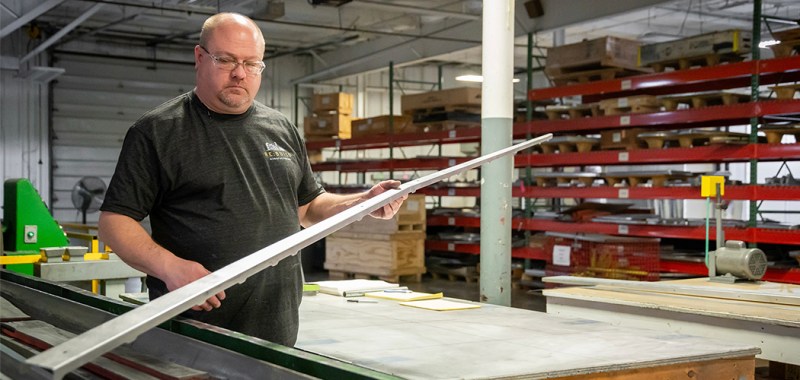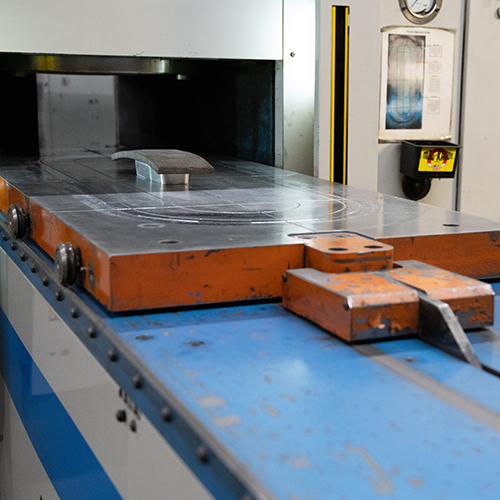We added our first hydroforming center to our Avon, Ohio facility in 2008 and it’s been our goal to keep expanding and innovating ever since. This hydroforming center enables us to manufacture parts of up to 12 feet in length. Furthermore, we have incorporated a smaller fluid cell press with a capability of 10,000 psi into our operations.
Our in-house tooling capabilities combined with the redundancy of multiple presses enables Cutting Dynamics to offer a large production capacity. Our team specializes in both high and low volume production, which means we can perform both large and small run production of components with distinctive efficiency.
Hydroforming allows us to form metal into a specific shape with fluid pressure, which acts through a rubber diaphragm. The result is a durable, lightweight component. Re:Build Cutting Dynamics offers more versatility for our clients when determining what fits their requirements because we can form from multiple materials, in addition to fluid forming them.
This process is rooted in efficiency, designed for creating quality components that are durable enough to use in aviation products and more.
Advantages include:
Carbon steel hydroforming results in uniform sheet thickness, uniform strength, high dimensional accuracy, and high material efficiency. We use this process to provide customized solutions to both the commercial aerospace and defense industries.
Advantages include:
This type of hydroforming, also known as fluid forming, pushes high-pressure fluid into a bladder situated above the flat blank. This forces aluminum, placed over a single side form, to conform to the desired shape by creating both vertical and horizontal pressure. The result is a simple or complex shape designed for performance in any industry. Customers commonly use this process for quick, efficient, and cost-effective results as it transforms ductile metals into intricate components. We especially recommend the process for projects that demand intricate parts that are complex, asymmetrical, or long and shallow.
The process works particularly well on aluminum, but we can also use any cold-formed metal including copper, nickel, steel, and stainless steel.
Depending on our client’s needs, we have two reliable hydroforming machines available. Together, they allow Re:Build Cutting Dynamics to create parts ranging in size and complexity. Both options help you cut costs in the long run.

The Triform fluid cell sheet hydroforming press from Beckwood Press Company allows high-speed, rapid tool change to form parts with low-to-moderate complexity. Its diaphragm is universal with 10,000 psi of pressure applied evenly across the material’s surface, allowing it to conform to any shape placed into the chamber. This eliminates the need for matched die sets and decreases tooling costs. Our Triform machine handles a substantial percentage of our parts, which offsets the need for the larger Verson press. The rapid cycle length of 32 seconds decreases overall turnaround time.

The Verson “bag press” Machine can form multiple parts in one press operation and is unique in that it has dual tables to feed from both sides of the machine. Although it has a lower psi than the Triform, it is an efficient and affordable operation for large, complex components.


There are several advantages to hydroforming, especially the overall quality of the product. One key advantage of this process is that only a single rigid die is needed, making it possible to form more complex shapes wrinkle-free and with material thinning of less than 10%. Hydroforming can be used across a range of applicable materials, too. In each case, we guarantee cost savings because hydroforming removes the need for steel tooling.
The benefits of hydroforming are varied, making hydroforming for aerospace and other industrial uses a worthwhile decision. We look forward to discussing how it could benefit your products and operations. Contact us today to get started!
Re:Build CDI
980 Jaycox Road
Avon, OH 44011
All rights reserved Re:Build Manufacturing LLC – Cutting Dynamics ©2024